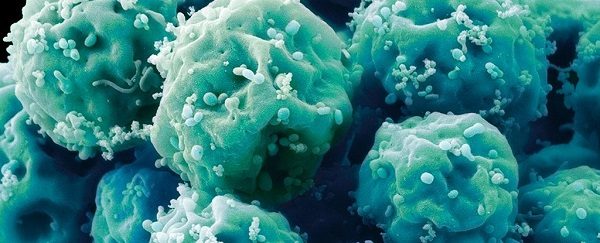
After first transforming cells from her blood sample into induced pluripotent stem cells (iPSCs), the researchers then generated mesenchymal stem cells, which help to maintain and repair tissues like bone, cartilage and fat.
"We set out to answer a big question: Can you reprogram cells this old?" says stem cell biologist Evan Snyder at Sanford Burnham Prebys Medical Discovery Institute in California.
"Now we have shown it can be done, and we have a valuable tool for finding the genes and other factors that slow down the aging process."
Stem cells are sometimes called "cellular Rosetta stones", because they allow us to study disease, cancer, ageing and regeneration like never before.
The most valuable type are embryonic stem cells (ESCs), but their acquisition is linked to some ethical issues, and such cells can be difficult to get a hold of. Thankfully, somatic cells, or adult stem cells, can be found in any human; we have the technology to genetically reprogram these units into induced pluripotent stem cells, which are nearly as potent as ESCs.
Until now, however, we weren't sure just how long an adult's cells remain programmable in this way. While some previous research suggests older stem cells cannot be reprogrammed, in recent years, scientists have been able to generate iPSCs from centenarians, or people who live to be more than 100 years old.
So, what about those who've won an even bigger genetic lottery? What about supercentenarians?
In the whole wide world, currently we know of only 28 people verified to be over the age of 110. This unique population is difficult to study, not only because of its limited sample size but also because of our records, which can be pretty shoddy at times.
Nevertheless, research so far has found supercentenarians not only age slower, they also show a strange immunity in general to chronic age-related diseases, like Alzheimer's and Parkinson's, that doesn't seem to have a lot to do with lifestyle.
"Why do supercentenarians age so slowly?" says Snyder. "We are now set to answer that question in a way no one has been able to before."
To do this, the team reprogrammed lymphoblasts from three donors: the supercentenarian woman, a healthy 43-year-old individual, and an 8-year-old child with a condition that causes rapid ageing.
Not only did the supercentenarian cells transform into iPSCs just as easily as the others, the telomeres - sequences of 'protective' DNA that sit at the ends of our chromosomes and shrink as we age - were also reset to more "youthful levels".
Granted, this telomere resetting didn't occur as frequently in older cells, only a third of the time. Nevertheless, the authors say what they were able to achieve on these occasions was equivalent to turning back the cellular clock from age 114 to age zero.
"These data indicate that extreme age is not an absolute barrier to reprogramming with restoration of telomere length," the authors write.
What's more, their technique only required four reprogramming factors - a manageable number that will make it relatively easy for scientists to see how these supercentenarian stem cells compare in the long run.
They claim reprogramming donor cells from extremely or prematurely aged donors is feasible, and that by doing so with retrospective samples, we might be able to expand on this small pool of supercentenarian donors.
The authors of the study hope their research will allow us to better investigate how and why supercentenarians live so long and are so extraordinarily resistant to degenerative disease. There's much we can learn from these remarkable people.
The study was published in Biochemical and Biophysical Research Communications.



Reader Comments